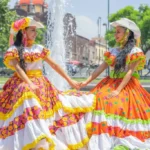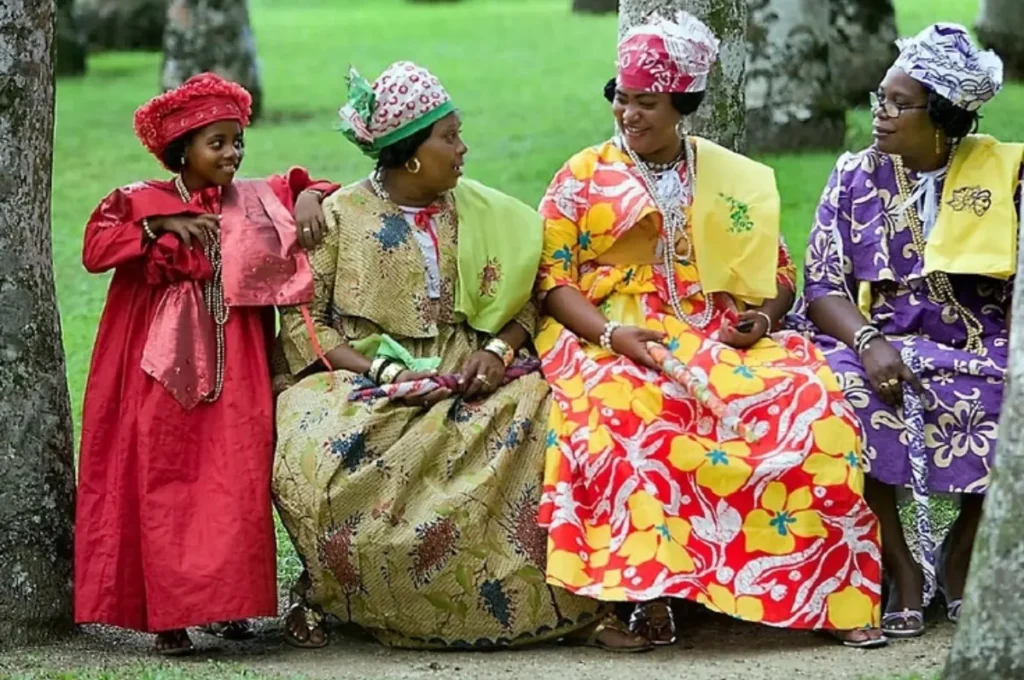Guyana, located on the northern coast of South America, is a nation celebrated for its rich cultural diversity. Its traditional clothing reflects the influence of Indigenous, African, East Indian, European, and Chinese heritage.
This article explores the historical roots, key elements, and cultural significance of traditional attire in Guyana, providing insight into the vibrant cultural identity of this unique nation.
Historical Roots of Guyanese Traditional Clothing
The history of Guyana’s traditional clothing is deeply intertwined with its multicultural population. Each group brought its unique attire and cultural traditions, which merged over time to form a colorful and diverse fashion heritage. Indigenous peoples, such as the Amerindians, wore clothing adapted to the tropical environment, while enslaved Africans and indentured laborers from India introduced garments reflecting their homelands.
Colonial influences also played a role, with European styles leaving an imprint on formal and ceremonial attire. Over centuries, these cultural elements blended, giving rise to the distinct fashion traditions seen in Guyana today.
See also Exploring the Essence of Venezuela’s Traditional Clothing: A Cultural Kaleidoscope
Exploring the Essence of Venezuela’s Traditional Clothing: A Cultural Kaleidoscope
Key Elements of Traditional Guyanese Clothing

👕 Traditional Men’s Clothing
- Kanji (Indigenous): Amerindian men traditionally wore loincloths called kanji, made from natural fibers such as cotton or tree bark. These were practical and lightweight, ideal for the tropical climate.
- Dashiki (African influence): Men of African descent often incorporate vibrant dashikis into modern celebrations, showcasing bold colors and patterns.
👗 Traditional Women’s Clothing
- Saris and Shalwar Kameez (Indian influence): Women of East Indian heritage frequently wear saris or shalwar kameez for festivals and ceremonies, reflecting their ancestral traditions.
- Skirts and Beaded Accessories (Indigenous): Indigenous women wear skirts made from plant fibers, often accessorized with intricate beadwork and feathered adornments.
🌺 Unisex Accessories
- Beaded Jewelry: Indigenous communities craft necklaces, bracelets, and headbands from beads, shells, and seeds, symbolizing cultural stories and spiritual beliefs.
- Headwraps: African-inspired headwraps are a popular addition to traditional attire during celebrations.
Regional and Ethnic Variations
Guyana’s traditional clothing varies significantly across its regions and ethnic groups.
- Indigenous Communities: In the rainforest regions, Amerindians maintain their ancestral dress, including feathered headdresses and intricately painted body designs.
- Urban Centers: In cities like Georgetown, traditional clothing blends with modern styles, particularly during festivals like Mashramani.
- East Indian Villages: Villages with predominantly East Indian populations see women adorned in colorful saris during Diwali or weddings, while men wear kurtas.
Traditional Clothing in Festivals and Ceremonies
Festivals and ceremonies in Guyana are vibrant showcases of its traditional clothing.
- Mashramani: This national celebration features colorful costumes, blending African, Indigenous, and modern influences. Participants parade in elaborate outfits adorned with feathers, beads, and sequins.
- Diwali: East Indian communities celebrate this festival with bright saris, embroidered kurtas, and intricate jewelry.
- Amerindian Heritage Month: During this celebration, Indigenous communities highlight their traditional attire, including feathered headgear and beaded necklaces.
Preservation and Modern Influence
While modern clothing dominates daily life, efforts are underway to preserve Guyana’s traditional attire:
- Cultural Festivals: Events like Mashramani and Indigenous Heritage Month keep traditional clothing in the spotlight.
- Artisan Workshops: Local artisans pass down techniques for weaving, beadwork, and sewing to younger generations.
- Educational Programs: Schools incorporate cultural education, emphasizing the importance of traditional clothing.
The Significance of Guyanese Traditional Attire
Traditional clothing in Guyana is more than fabric and adornment; it is a testament to the country’s rich cultural mosaic. By celebrating and preserving these garments, Guyanese people honor their heritage and the unique stories that connect their diverse communities.
See also Traditional Clothing of Colombia: A Vibrant Tapestry of Heritage and Diversity
Traditional Clothing of Colombia: A Vibrant Tapestry of Heritage and Diversity
From the vibrant dashikis of African descendants to the intricately beaded skirts of Indigenous tribes, Guyana’s traditional clothing reflects the beauty of its multicultural identity.